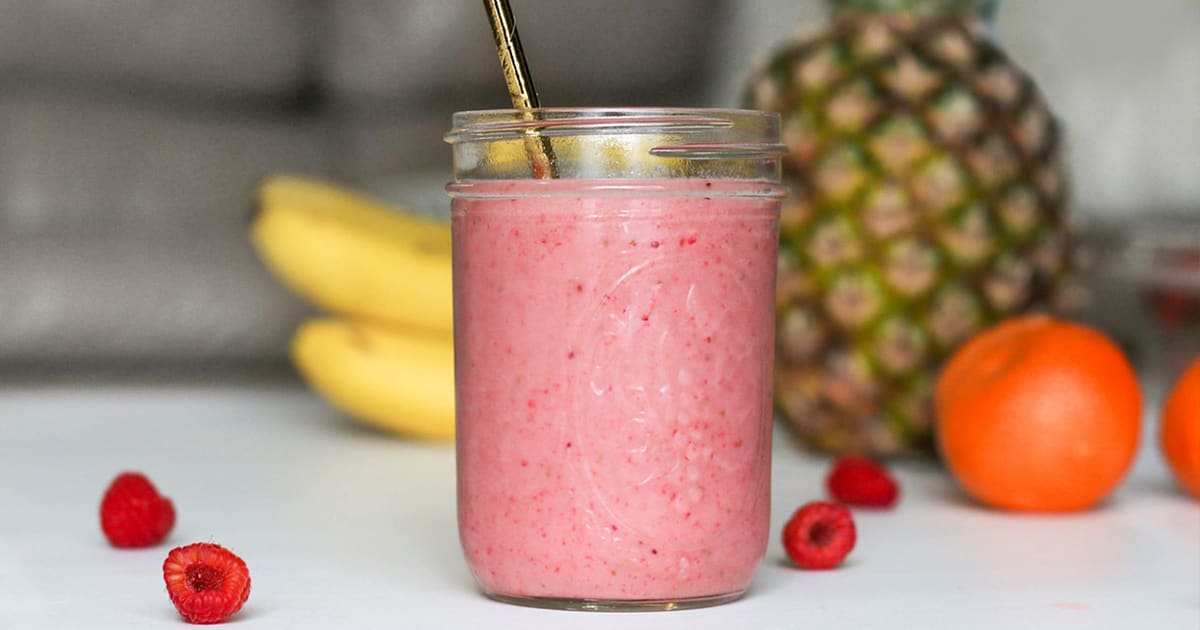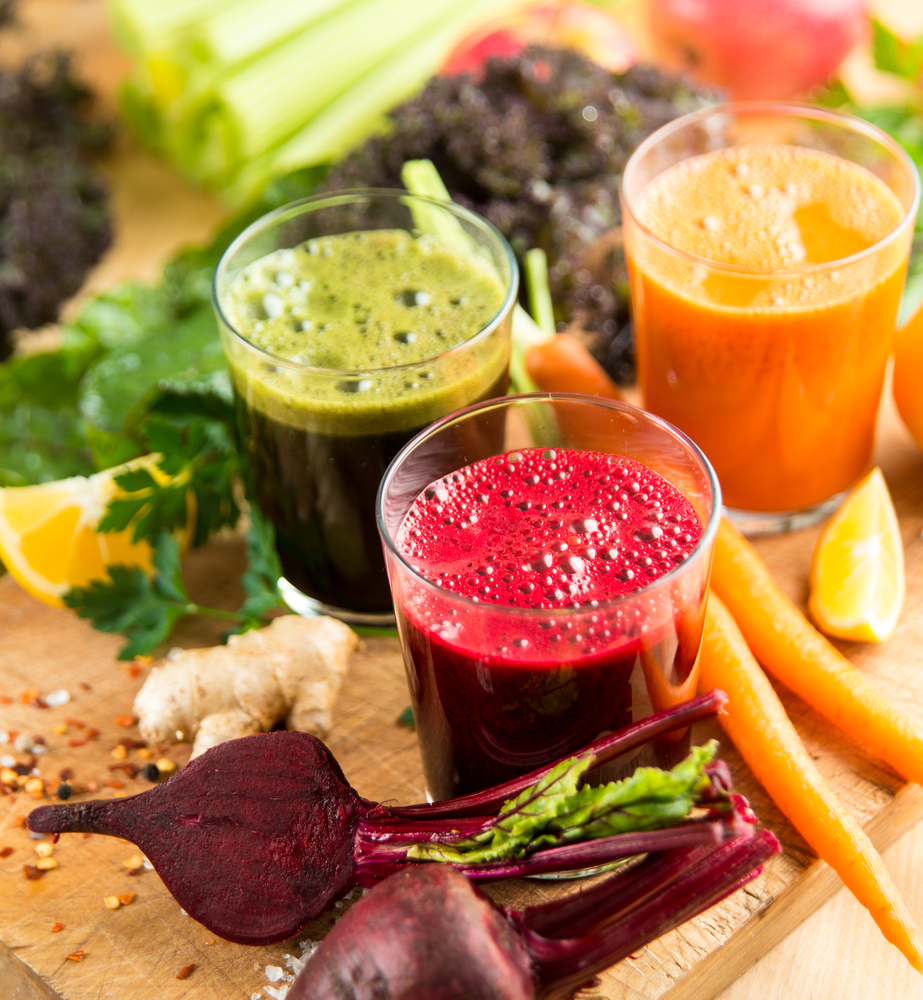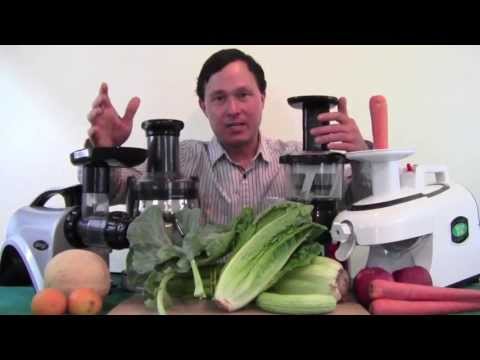My heart melts the moment I see families, especially children, drinking green juice, but I am both concerned and desperate to help individuals who are making simple mistakes preparing juice in the wrong manner.
Therefore, I plan to go over common juicing mistakes I personally observed with the hope of putting my crazy concerned look to rest. The important thing to remember is, .
Even if you make these mistakes, you’re better off juicing than not juicing at all in this world of processed foods.
Relevant Read : Best Smoker for the Money: Top Value Reviews – Chef Beas
Some of the common mistakes made while juicing are:
Juice helps you lose weight.
I’m not saying that juice won’t help you lose weight, because only if you combine it with proper diet and exercise.
Please use your common sense.
However, if you over a longer period (eg . On weekdays) than drink juice and don’t know what to expect, ask for trouble.
If you are new to the juice this should be read so that you do not experience any of the above terrible pains or long term ill health effects.
So without further ado, here are the mistakes and ways to avoid them.
1. Using the same ingredients every day
It is the fault of many people. Juice is a great way to add nutrients like antioxidants, vitamins, and minerals to your body. At the same time, however, you are also digesting toxins which in large doses can be fatal.
These toxins are the plant’s natural defense mechanism against attack.
Learn more about the natural toxins in vegetables here .
These toxins include:
- Oxalates , which can cause or worsen kidney stones , are found in fruits like bananas, cherries, grapes, mangoes, melons, and vegetables like chives, cauliflower, spinach, and radishes, to name a few.
- The atropine in tomato leaves and, to a lesser extent, in green tomatoes, can cause abdominal pain, dizziness, and headaches.
- Cyanogenic glycosides (or cyanides) found in the kernels of apples, plums, peaches, apricots, and cherries can be fatal if consumed in large doses. Remember to remove the seeds before squeezing these fruits.
- Goitrogens found in cruciferous vegetables such as cabbage, broccoli, kale, mustard seeds, and cabbage can affect thyroid function primarily when eaten raw (or in our case, ingested in high doses).
I could continue with this list. But I’m going to stop here because I just wanted to illustrate the importance of variety in juicing. After all, you’re not just getting all the vitamins and antioxidants you need.
You also avoid digesting the same toxins over and over again, which can be harmful.
You want to change the green every day eg. B. Kale as the main ingredient on Monday. Then on Tuesday spinach, Wednesday romaine lettuce, Thursday wild lettuce and so on.
The more variety you have, the more nutrients you take in, the better for your body
Relevant Read : Best Smokers for Summer Sausage – Put on a good BBQ party for everyone.
2. Swallow it as fast as you can
It’s another no-no.
Why?
Because digestion begins in the mouth , not in the stomach, as we have all come to believe.
Mixing saliva with juice absorbs more nutrients into your system than if you had just swallowed it.
I know, I know it doesn’t taste good, and it can be downright nasty if you combine the wrong ingredients.
That’s why you need recipes to get started.
This will help you determine exactly what to put in your juice to prevent something from being created that makes you vomit.
One way to savor your juice is to sit on your couch with your favorite book in hand.
Smell it like an expensive wine, then savor the taste with your tongue as you drink it slowly.
3. Using only fruits without vegetables

Did you know that apples contain 13.3 grams of sugar per 100 grams, mangoes 14.8 grams per 100 grams and a 355ml can of cola contains 39 grams of sugar ?
If you do the math, they have about the same sugar levels.
While fruits have a healthier natural sweetener called fructose, it doesn’t matter if you’re insulin resistant (in short, you have diabetes).
Drinking fruit juice every day makes it worse.
By the way, if you’re interested in the full list of sugar content in fruits and sodas, check out the articles here and here .
If you love and need to take care of your juice, experts say it’s best to use a blender because it will retain all the fibers that slow the absorption of sugar into the bloodstream, but do it. in moderation for health reasons.
The role of the fruit in a juice recipe is to act as a sweetener, but it shouldn’t, as I repeat, be the main ingredient. Add about 1 or 2 varieties to accompany vegetables and other vegetables.
4. Adding too many dark green vegetables to the mixture
Dark leafy vegetables taste strong and bitter, and too much can cause vomiting.
This is especially true when you are just starting out. John Kohler of Discount Juicers recommends that you limit it to around 25% and use other vegetables like cabbage or cucumber to supplement the extra 75% and dilute the intense flavor.
5. Buy a juicer because the guy in the ad says it’s for the best
:max_bytes(150000):strip_icc()/GettyImages-184829646-59fdfec9da27150037dd881a.jpg)
There is no better juicer that can meet the needs of every individual.
The type of juicer you buy mainly depends on the type of ingredients you add and how often you juice.
Other factors are price and noise tolerance, so you need to assess and balance things.
Each juicer has its strengths and weaknesses.
A centrifugal juicer requires less pre-cut and juice faster, but extracts less juice from greens (you can’t use it on wheatgrass). And you can’t keep the juice for more than a day.
A vertical screw juicer requires a lot of pre-cutting to avoid clogging the pulp outlet. However, it takes up less space compared to a horizontal screw centrifuge.
The latter, however, only requires minimal pre-cutting, especially with the green leaf material, as the outgoing pulp has to be passed through a small pulp outlet. Instead, it is placed directly into a container for composting or disposal.
Similar to buying clothes, you don’t buy a tank top in the winter and a leather jacket in the summer.
The same goes for buying a juicer. You have to look for something that matches your needs.
Make a checklist of your preferences, recipes, and budget, then head over to our review section to compare different brands, pros and cons so you can narrow down your choices.
Relevant Read :The Best Bluetooth BBQ Thermometers of 2021 – Chef Beast
6. Adding random ingredients and hoping it goes well is a recipe for disaster.

Another big no-no. We often see this on advertisements. While you can do this while still getting great results, you want to be more mindful and look for recipes, especially if you are just starting out.
One risk of throwing random things is that you don’t know what you are getting. It can be good or bad for you to throw up the first sip – now you don’t want to.
It can make you sick.
Another risk is having a chemical reaction by combining the wrong ingredients that can make you sick .
Avoid squeezing old and wilted vegetables and fruits as much as possible, as they will not be able to juice well, even with the best juicers.
Use fresh produce
Always use fresh, organically grown produce if possible, or grow your produce if you have space in the backyard.
Using fresh fruits and vegetables equates to tasty and nutritious juice.
If you have a lot of old, withered fruit or veg in your fridge, I recommend using them as compost if you have a backyard garden.
7. Do not twist the product you put in the juice extractor
This is one of the biggest mistakes people don’t talk about more often than they should.
For centrifugal centrifuges
Rotating the ingredients will allow you to maximize the amount of juice you can extract. It applies to components like leafy vegetables. As these are light, the blade has nothing to “grab” because it lacks mass.
What I like to do is combine. Let’s say kale with something hard like an apple or a carrot. Most of a carrot or apple will help push the kale onto the blade so the blade can squeeze more juice out of it.
Another benefit of rotating ingredients is that you have an even distribution of flavors without having to mix them up.
Another way to squeeze leafy vegetables in a centrifugal juicer is to stack them into a massive roll and then immediately fill them with a carrot. It minimizes the small leaves floating above the sap.
Relevant Read : Best Pressure Cooker For Canning – Top Picks Of 2021
For chewing juicers

This tip is for centrifuges with vertical equipment like the Hurom .
You have to be careful when extracting fibrous green vegetables like spinach, which are stringy because they tend to get clogged in an entire batch.
You can alleviate this problem by alternating it with another tough vegetable like a carrot or cucumber.
Remember to chop those threadlike greens so that the pulp outlet is not clogged. I wrote an article on how to squeeze celery on a slow vertical juicer . Make sure to check it out. This principle also applies to other fibrous green vegetables such as spinach or green cabbage.
This does not apply if you have a horizontal juicer like an Omega NC800 because the pulp discharge opening is straight. There is therefore no risk of constipation.
8. Do not drink immediately after
To get the most nutrients from fresh produce, you MUST drink it immediately afterwards.
The longer the juice is exposed to air, its content of nutrients, enzymes and secondary plant substances, the more the good substances oxidize.
This reduces the number of nutrients available, which is why you mainly use juice.
Drink within 15 minutes
Chef beast recommends that you drink it within 15 minutes of extraction.
Now let’s say that you have a job and you cannot drink fruit juice at your workplace. Store it in an airtight container in a portable cooler that will keep it cool for 24-36 hours (if you use a press, it can stay cool for up to 72 hours).
When you go to work, keep them in the refrigerator (if available) or drink them as soon as possible.
Also, avoid allowing freshly squeezed unpasteurized juice to heat up, as bacteria can grow in it, making it a harmful drink rather than a healthy drink.
This can lead to food poisoning.
Use glass containers
According to experts, one of the best storage containers for fresh juice in a glass.
The glass does not contain any of the harmful chemicals found in plastic and is ideal for keeping fresh juices in a refrigerator.
Another option would be to store it in a stainless steel thermos flask .
Fill it to the brim if possible, filling in too much to remove any excess air inside.
9. Do not clean up after
I can’t stress this enough, ALWAYS clean the juicer after use. It prevents stains and pulp from drying out to the point where it is difficult to remove them.
Self- cleaning centrifuges do not exist.
Some juicers claim that their products are “self-cleaning”. But even with this feature, you have to take them apart and clean them with a brush and running water to remove the pulp that has accumulated in them.
If it is not possible to clean immediately after, soak the parts in water to prevent the pulp from drying out and contaminating all the components it contains.
Dried pulp can be a nightmare to clean up.
I saw a contaminated juicer with my own eyes that contains my mom’s centrifugal juicer.
It extracts a lot of juice from carrots, celery and applies so that the internal parts have a light orange tone. Once the stain has hardened, cleaning up becomes complicated.
10. Think of juice as a substitute for solid foods

I have read many articles that talk about the “dark side of juice” because of this mistake.
Remember, our body is like a machine, it needs fuel to function properly, and if you deprive it of certain nutrients , IT IS NOT .
Balance is the key
Our bodies need nutrients, calories, glucose, and fiber from fruits, vegetables, poultry, and meat.
They all play an essential role, so it is important to have a balanced diet.
Depriving your body of solid foods and relying only on fresh juice and expecting a hectic workday is a recipe for disaster.
You are likely to experience fatigue, food cravings, loss of energy, or worse that could cause you to pass out.
You cannot replace solid foods with juice.
Juice is not a substitute for solid foods. Think of it as nature’s dietary supplement taken 20 minutes before a meal. This will help fill in the missing nutritional gaps that you cannot get from your normal diet.
In a Harvard School of Public Health article , the average American only consumes three servings of fruits and vegetables per day. However, the dietary guidelines suggest that we should eat between five and thirteen servings depending on body type and energy needs , so there is a big gap.
The juice helps reduce appetite.
Drinking fresh fruit juice before eating can help reduce your appetite. This habit will cause you to eat less than usual. This will help you recalibrate your taste buds, from candy cravings to processed drinks to something more natural like green juice.
Replace unhealthy sodas with healthy juice
If you drink a can of soda every day, replace it with a cup of green juice . Do it for a month and tell me what’s going on.
What should you do before fasting?
For those of you who are planning to grab a glass of juice on the go, you need to exercise your care and prepare your body for it. Preparation includes limiting physical activity during the fast and reducing the days of food intake before the scheduled fast.
This includes gradually reducing solid foods for a few days.
Root juices recommend that you eliminate meat from your diet two days before the fast and eat soft foods (like porridge) before eating solids when breaking the fast.
Preparing your body will reduce the shock your body experiences by reducing its food intake. This will allow you to go through the fast without passing out.
11. Drinking on an empty stomach
Fresh juice should be taken on an empty stomach to maximize nutrient absorption. Drinking it on an empty stomach will put you on the gas.
12. Not using the fresh products

In order to extract the maximum amount of nutrients from your vegetables and fruits, they should be fresh and, if possible, organic.
The fresh produce is just as delicious as the juice. The cooler the better, as the experts would say.
If organic is too expensive for you, wash it and then do it soak in water to remove traces of pesticides and other chemicals on the surface, some fruits like apples.
Important note: wash and soak, even if you buy organic products.
The best scenario would be to grow your vegetables and fruits at home. That way, you literally have a supply of fresh, tasting, best tasting ingredients right on your doorstep.
Fresh fruits and vegetables are richer in nutrients than the store-bought variety, which may not be as fresh as it takes time to harvest, package, and deliver.
13. Not washing or not washing enough
Since we are ingesting raw products, this is a critical step that we should not take for granted.
Try rubbing your finger on the skin of an apple or pear. Is it a little sticky? The apples I bought are like this.
Wax feeling = pesticide
Traditionally grown produce contains a pesticide that leaves a waxy feel and provides a waterproof protective coating against the elements. It acts like a car wax in terms of protection, but it contains chemicals which are not good for us.
The amount of pesticides is another issue.
About 20 million Americans consume more than eight types of pesticides per day, which translates to more than 2,900 pesticides per year. Ouch!
Organic products contain little or no pesticides.
Even if you use organic products, wash them thoroughly as pests may be present even if they contain little or no pesticides. These insects also have harmful effects when digested.
Wash well
Washing with water alone is not sufficient to remove them because pesticides can penetrate deep into the skin of products. What are the options if cleaning with water alone is not enough?
There are some homemade recipes that can help you get rid of that waxy feeling. A special solution is to mix some caps filled with cider vinegar of apple and fine sea salt with a water bowl.
In theory, this would double the life of your products.
If you don’t want to worry about making your vegetarian wash solution, you can opt for a commercially available product that has already done it for you.
SISEL OrganiCleanse is one such product, which helps to dismantle about 98% of these harmful, parasitic and harmful pesticides.
Another commercially available product is Veggie Wash. In principle, it works exactly like Sisel’s OrganiCleanse . I have included it here to give you more options for using it.
Soak for at least 5 minutes
Whether you use a homemade product or a commercial one, experts recommend that you soak products in water for at least 5 minutes , stir gently, then rinse to remove dirt, grime and traces of pesticides. .
If you are storing it, dry it with a clean towel before storing it in an airtight plastic container.
Make sure all products are dry before storing them. This prevents mold growth and allows you to keep it longer.
14. Not listening to your body
If you plan to drink a glass of juice, please read it carefully.
While reading all the lightning-fast horror stories, I noticed that people weren’t getting ready or listening to their bodies.
Know what to expect
In short, they didn’t know what to expect and when they felt their body detoxifying, they didn’t know what to do or how to deal with it.
These people all suffered from rashes, drooling, sweating, vomiting, loss of energy, diarrhea and, worse yet, fainting in one way or another.
Ironically, all of these symptoms, aside from fainting, are to be expected from a juice fast, as Sara Ding explains very well in her article .
Symptoms vary from person to person. And it depends on the type of toxins your body has accumulated over the years. Another factor is diet.
Remember, the more toxins your body contains, the more severe the symptoms.
Know when to stop
Now if you feel like you can’t get on with the juice quickly, STOP!
And interrupt the fast by gradually adding soft foods to your diet.
Don’t wait until you pass out before you break the fast. Remember that health is your number one priority.
15. Not Juicing at all

Of all the mistakes I have listed here, this is the biggest and most obvious. If you don’t drink juice, you will miss out on all the benefits not only for your health but also for your appearance.
Ask anyone who’s been juice for a long time and they’ll tell you. You get better-looking skin only because you absorb more of the nutrients your body needs to regenerate damaged cells while removing toxins that can damage your skin.
To give you a quick overview, here are some of the benefits:
- Lower your risk of cancer, cardiovascular disease and inflammatory disease
- Strengthens the immune system
- Eliminate toxins
- Weightloss
If someone says eating fruits or vegetables is healthier because you get all the fiber, think about how it would feel if you ate a whole Fuji apple.
Filled right?
Then add two carrots or a few stalks of celery. you might throw up
I think you have the picture. Juice clears your digestion and allows your body to absorb more nutrients without getting stuffed.
Final Word
If you have reached the end, I salute you. If this article has helped you, spread the word.
Just in case you have more tips on sharing, comment below.






![Best Meat Grinder For Deer [Ultimate Guide For Beginners] - Chef Beast Best Meat Grinder For Deer](https://chefbeast.com/wp-content/uploads/2021/04/Best-Meat-Grinder-For-Deer-150x150.jpg)